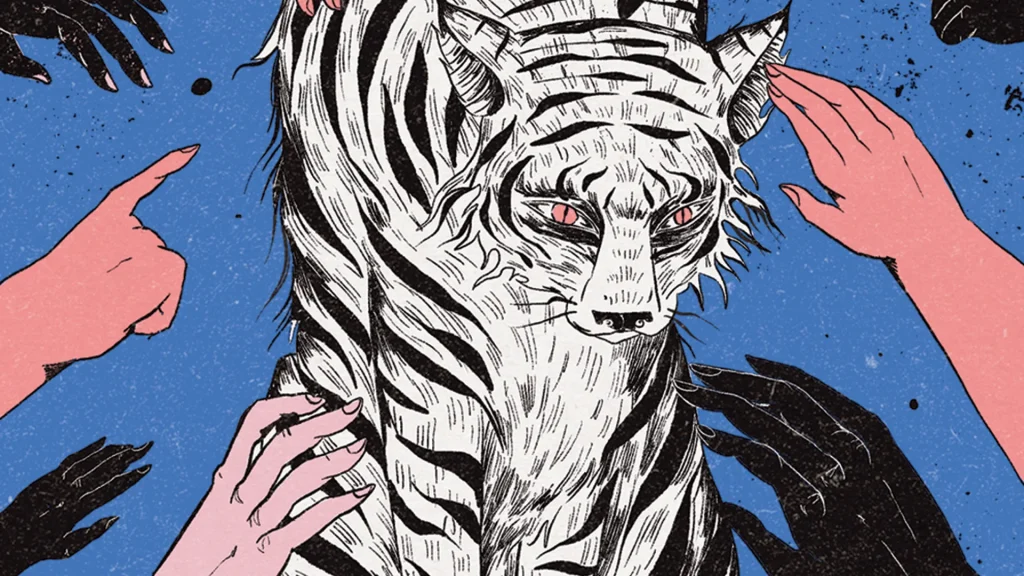The Myth and Majesty of the Tiger: A Tale of Power, Beauty, and Tragedy
Tigers have long captivated human imagination, embodying strength, mystery, and even divinity. Across ancient cultures, from India to China and beyond, tigers were not just revered as powerful creatures but were woven into the fabric of legends, religions, and national symbols. Yet, behind the majestic stripes lies a story of exploitation, myth, and the struggle for survival.
A Silent Stalker: The Tiger’s Lethal Grace
Picture yourself as a traveler, thousands of years ago, venturing into an ancient forest in Asia. You move quietly, but in an instant, you are felled by an unseen force. The culprit? A tiger, whose padded feet made no sound as it approached, and whose amber eyes pierced the dark with night vision far superior to yours. Weighing over 300 kilograms and capable of locking its jaws with the force of 450 kilograms per square inch, the tiger is a lethal predator. Unlike lions, which hunt in prides, the tiger hunts alone, a master of stealth and strength.
Symbol of Strength and Divinity
Tigers are not just feared predators; they have been revered as sacred beings across Asia. In China, they are associated with Taoism and represent the yin and yang, symbolizing balance in nature. In India, tigers are seen as guardians of the forest, and their powerful, solitary nature earned them a place in Hindu mythology as a symbol of divine power. Countries like Cambodia and Thailand have also honored tigers as protectors of the natural world.
Yet, this reverence has been both a blessing and a curse for the tiger. While they are hailed as symbols of strength, humans have also sought to consume their power. From ancient times to the present, tiger bones, meat, and even milk have been used in traditional medicine, believed to bestow strength and virility. Despite no scientific proof, this belief has fueled an illegal trade that has decimated tiger populations.
The Struggle for Survival
Once roaming freely across vast stretches of Asia, tigers have been driven to the brink of extinction. Over the centuries, human fascination with tigers has turned deadly. In colonial India, British aristocrats hunted tigers for sport, often killing dozens in a single expedition. The Maharajas of India, eager to impress their colonial overlords, joined the slaughter, contributing to the rapid decline of tiger populations.
By the 20th century, the tiger’s numbers had plummeted. From an estimated population of 50,000 at the start of the 1900s, only 2,500 remained by 1970. Today, there are more tigers in captivity than in the wild, with less than 5,000 left in their natural habitats. The allure of their striped fur and the misguided belief in their medicinal properties continues to fuel poaching and illegal farming, particularly in countries like China and Thailand.
The Tragic Tale of the White Tiger

Perhaps the most poignant symbol of humanity’s exploitation of tigers is the story of Mohan, a rare white tiger born in India in 1951. His striking white fur and blue eyes, a result of a genetic mutation, made him an instant sensation. However, his uniqueness came at a price. White tigers like Mohan are exceedingly rare in the wild, where their bright coats make them easy targets for predators and hunters alike. Captured and bred in captivity, Mohan became the ancestor of all white tigers alive today, but his descendants suffer from genetic defects, and many die young.
Tigers in Decline: Myths, Poaching, and Exploitation
The mythologizing of tigers as symbols of virility, strength, and beauty has had devastating consequences. Across Asia, tiger farms and illegal markets thrive, driven by demand for tiger parts used in traditional medicine. Despite strict laws, the trade persists, with tigers raised in captivity being sold for their bones and organs. In countries like Thailand, tiger meat is even served in restaurants, further depleting their already fragile population.
Efforts to protect tigers, such as nature reserves in Kazakhstan, offer some hope, but the road to recovery is steep. In a world where the tiger’s natural habitat is shrinking and poaching remains rampant, their future is uncertain.
The Imaginary Tiger vs. Reality
Humanity has always projected its fears, desires, and myths onto animals, and the tiger is no exception. In the West, tigers have often been depicted as evil predators, from Rudyard Kipling’s The Jungle Book, which cast the tiger Shere Khan as a villain, to stories of man-eating tigers terrorizing villages. These tales, while thrilling, have painted an exaggerated picture of the tiger as a brutal killer. The reality is far more nuanced. Tigers, like all animals, act on instinct, driven by survival rather than malice.
The Final Roar
The tiger, once the undisputed king of the jungle, now faces extinction, not because of its natural enemies, but because of human greed and misunderstanding. Our fascination with this magnificent creature has driven us to both revere and destroy it. As tiger populations continue to dwindle, the question remains: can humanity learn to coexist with this ancient symbol of power, or will the tiger’s roar be silenced forever?
In a world that too often turns beauty into profit and power into legend, the tiger stands as both a victim of and testament to our complex relationship with nature. The tiger’s story is not just one of tragedy but of the human imagination—and the consequences of seeing what we want, rather than what is real.






